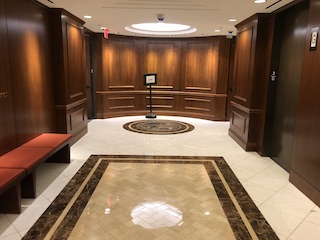In early 2020, the world slowly became aware that the COVID-19 virus was more serious than the annual flu. By March 2020, deaths were accumulating in certain parts of the world like Italy and China at an alarming rate.
The first positive tests for the virus soon happened in California and in response, the Judicial Council of California adopted Emergency Rule 4 to implement an Emergency Bail Schedule to minimize the spread of COVID-19 within the jails.
The Gist of this Article: Judges may not set bail during the COVID-19 pandemic, subject to numerous exceptions for public safety due to the nature of the crimes alleged.
The Emergency Bail Schedule sets bail for all misdemeanor offenses, felony offenses, and violations of postconviction supervision at zero dollars (no bail) with certain exceptions.
The exceptions include a serious felony, as defined in Penal Code § 1192.7(c) or a violent felony, as defined in Penal Code § 667.5(c), a felony violation of Penal Code § 69 (resisting arrest), a violation of Penal Code § 166(c)(1) (violation of a restraining order to protect a victim of domestic violence, witnesses to a trial, a victim of elder abuse or the juvenile victim or his / her family in a sex offense), a violation of Penal Code § 136.1 (witness intimidation), a violation of Penal Code § 262 (spousal rape), a violation of Penal Code § 243(e)(1) (misdemeanor domestic battery) or § 273.5 (domestic violence), a violation of Penal Code § 273.6 (a workplace violence protective order), felony violation of Penal Code § 422 (criminal threats), Penal Code § 646.9 (stalking), a violation of an offense listed in Penal Code § 290(c) (sex offenses), a violation of Vehicle Code § 23152 or § 23153 (felony or misdemeanor DUI), a felony violation of Penal Code § 463 (looting during an emergency), or a violation of Penal Code § 29800 (felon in possession of a firearm). For these offenses, the regularly adopted countywide bail schedule applies.
 Fourth Appellate District Court of Appeal Div 1 San Diego
Fourth Appellate District Court of Appeal Div 1 San Diego
San Diego County Superior Court then issued its own order on bail. It adopted Emergency Order 4 and established a procedure for handling persons arrested before implementation of the Emergency Bail Schedule. Such persons were to be released on no bail unless the prosecuting agency notified the custodial officer that the agency would be requesting an increase in bail, a “no bail” hold, or the imposition of conditions of release.
The San Diego District Attorney’s office and the associated city prosecutors affected by the San Diego Superior Court order then identified between 100 and 200 people in pretrial custody for whom a bail increase, no bail or bail conditions were sought.
The San Diego County Superior Court general order also specified that each judge “retains the traditional authority in an individual case to depart from the bail schedule or impose conditions of bail to assure the appearance of the defendant or protect public safety.”
The group of 100 to 200 people held in custody filed a petition for writ of mandate to the Fourth Appellate District contending that the San Diego County Superior Court order conflicts with Emergency Order 4, arguing that bail must be set at zero for the offenses covered by the rule and that the individual judges have no authority to increase bail or set conditions in an individual case.
The Fourth Appellate District disagreed with the petitioning prisoners in Juan Ayala v. Superior Court of San Diego County (2020 DJDAR 3984), finding that the Emergency Order only set presumptive bail amounts for the covered offenses and violations. It stated, “[t]he Judicial Council did not intend to suspend the array of statutes covering bail, as well as the superior court’s inherent authority, which allow the judge to depart from the scheduled bail amount or impose bail conditions in individual cases under appropriate circumstances.”
It went further, reiterating that a judge’s consideration of bail in an individual case is governed by “mandatory factors” identified in the California Constitution at article I, § 28, subd. (f)(3), which are:
“In setting, reducing or denying bail, the judge or magistrate shall take into consideration [1] the protection of the public, [2] the safety of the victim, [3] the seriousness of the offense charged, [4] the previous criminal record of the defendant, and [5] the probability of his or her appearing at the trial or hearing of the case.”
If the judge imposes conditions of bail, “any condition must be reasonable, and there must be sufficient nexus between the condition and the protection of public safety.” In re Webb (2019) 7 Cal.5th 270, 278.
We bring this article to the reader’s attention because there is a great deal of misunderstanding, we find, regarding bail and the COVID-19 pandemic has caused renewed focus on this issue, leading to this opinion, which we believe clarifies the guidelines for bail.
The citation for the Fourth Appellate District Court ruling discussed above is Juan Ayala v. Superior Court of San Diego County (4th App. Dist., 2020) 262 Cal. Rptr. 3d 22.
For more information about bail, please click on the following articles:
 Fourth Appellate District Court of Appeal Div 1 San Diego
Fourth Appellate District Court of Appeal Div 1 San Diego